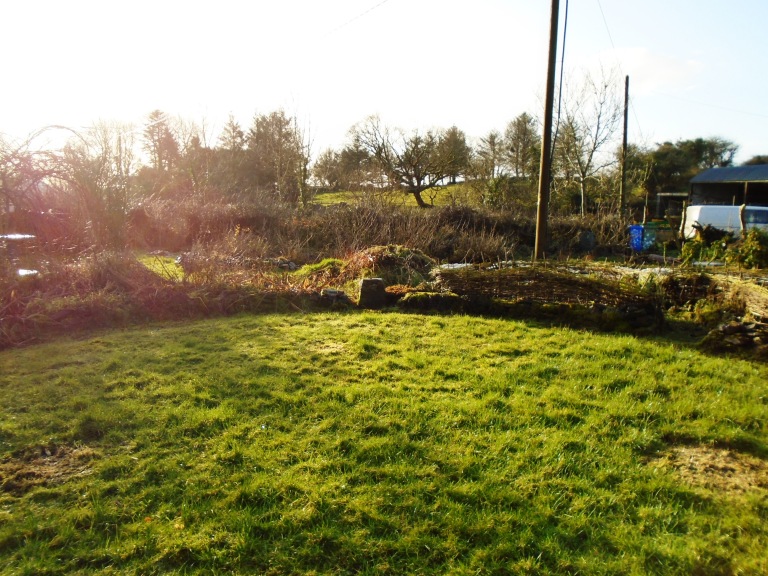As we look back at the month of January we would like to use a Swedish word that sums up our involvement in the garden during that period, and it is lagom. Lagom is a word that has slowly spread out across the world in the last couple of years and there is not really any one word in the English language that it translates directly into. The closest might be moderate, adequate, good enough or just the right amount. Not too little and not too much.

In our garden it represents the right amount of involvement. There is a balance to be struck when the land is tidied up at this time of the year. Some plants have lots of stalks and leaves that collapsed at the end of last growing season, leaving other plants that are not as tenacious buried under a mass of rotting plant matter. We have removed some of this but only enough to let the underlying plants breathe and have a chance to grow. We also weed out some of the nettles, creeping buttercups and silverweed but do not spend too long on the process. After that we mulch the ground with rotted manure and woodchips to suppress the plants that are threatening to take over and leave gaps in the mulch where our perennials and other beneficial plants have a chance to thrive.

We have covered the vegetable beds with a layer of cardboard to suppress unwanted plants and on top of that we have put a layer of sheeps wool. This acts like mulch and in the next few weeks we are planning to add some woodchips and rotted horse manure as a top layer. The plan is to later plant our vegetable seedlings straight into the beds by making small planting holes through the mulch. It is an experiment and it will be fun to see how well it will turn out. The sheeps wool will act as a slug suppressant we hope and it will slowly rot down and release nutrients into the soil.

Before

After
We believe this is another example of spending just enough time and effort on a project and hopefully it will pay off with a large vegetable harvest later in the year.

Talking about harvests, we dug up a lot of Ocas, South American tubers, at the end of the month and they are now curing in the sunshine as they can be a bit sour or acidic straight out of the ground. A few days exposure to sunshine should get them ready for roasting in olive oil or making into a delicious mash with garlic. They are one of our most valued perennial vegetables as every year when we dig them up, there are always some small ones left in the ground and they grow and multiply for another harvest.

Oca plants in August, they are the small clover like leaves in the middle of the picture.
The beds around our circle need some attention this coming month with foliage to remove, a few opportunistic plants to weed out and mulch to be applied. Again we will use our approach of “lagom” and leave things on the wild side. A garden less tidy is so much better as wildlife, native plants, fungi, trees, shrubs, vegetables, herbs and people can all happily co-exist and benefit. Our aim is to guide the land gently in our preferred direction, using only natural methods.

East

South

West

North
One of our ponds needed some duckweed removed and we left it for a day next to the pond so any small critters could wriggle back into the water. After that we spread it all over our artichoke beds as a nutritious weed suppressant. There is always a place for everything and nothing is wasted in our small ecosystem. We are looking forward to another busy month on the land, with spring blossom, frogspawn, lots of birdsong and the returning light.





